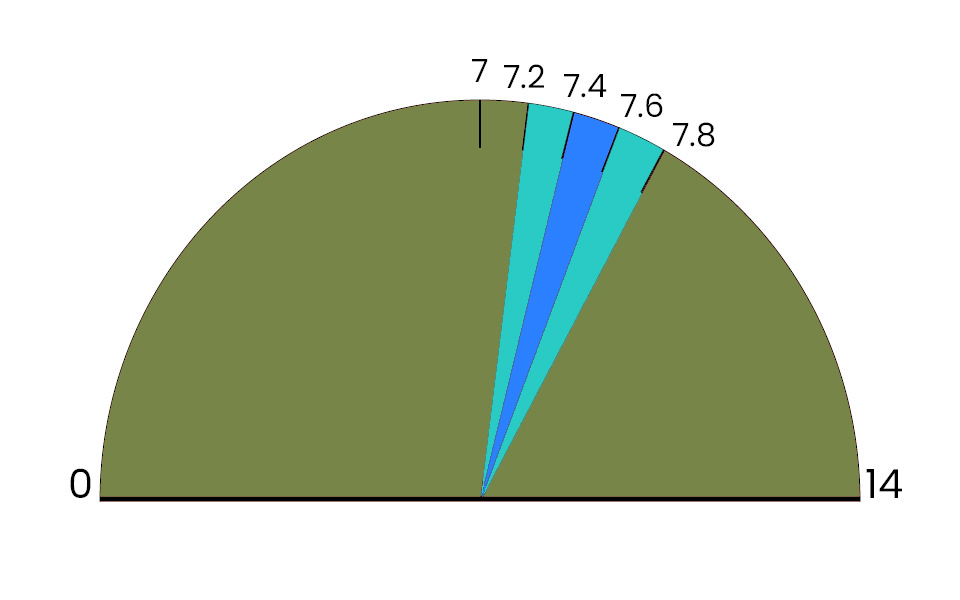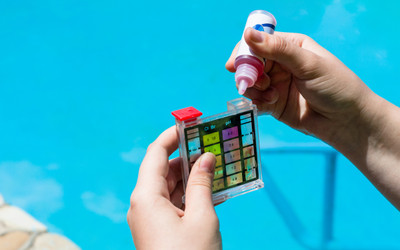How To Manage Your Pool's pH Levels
7th Aug 2023
Keeping your swimming pool beautifully clear and free of bacteria and other contaminants is a balancing act. In addition to maintaining water level and temperature, you need to keep up with chlorine and other pool chemicals.
One important factor affecting a clean pool is pool water pH level. A high pH level can reduce the ability of your chlorine to kill bacteria and also can cause skin rashes. Low pH, however, can irritate swimmers’ eyes and mucous membranes, and cause cloudy water. A low pool water pH level can even corrode exposed metal parts, like pool ladders.
Let’s dive into how to balance pool water to maintain the perfect pH level in your swimming pool.
What is the ‘Perfect’ pH Level?
Pool water pH is described on a scale from 0 to 14. Zero is the most acidic; 14 is the most alkaline. Properly balanced pool pH hovers right near the middle. As a swimming pool owner, you should keep these levels in mind:
Ideal pH Range
7.4 to 7.6
Acceptable pH Range
7.2 to 7.8

How to Fix pH Balance in Your Pool
There are several pool water products on the market designed to help keep your pool water clean and clear. You will balance your pool’s pH levels using either pH reducers, like muriatic acid or sodium bisulfate, or pH increasers like sodium carbonate (soda ash) or sodium bicarbonate (baking soda).
Handle swimming pool chemicals very carefully. They can be dangerous! Muriatic acid, for instance, is also used to etch concrete. Protect yourself from splashes and spills by wearing safety glasses, gloves and protective clothing. Store these products safely to avoid serious injuries to you or your pets.
Step 1. Test the water’s pH level. Use a pool water testing kit or pH test strips to determine the current pH level of the pool water. If it’s below 7.2, you need to add pH increaser. A pH reducer is recommended when you have swimming pool water with a high pH, 7.6 or above.
Step 2. Calculate the amount of pH increaser or pH decreaser needed. Refer to the instructions provided with the water balancer to determine the amount required to balance the pH level. The dosage may vary depending on the product and the volume of water in your pool.
Step 3. Prepare the pH balancer. Follow the instructions on the pH product packaging to prepare the solution. This may involve diluting the product in a bucket of pool water or adding it directly to the pool, depending on product instructions.
Step 4. Add the balancer. Slowly pour the prepared pH balancing solution into the pool water, making sure it is evenly distributed.
Step 5. Circulate the water. Run the pool’s circulating system to help distribute the product throughout the pool water. This will help the product mix evenly and adjust levels more quickly.
Step 6. Wait and retest. Allow the pH balancer to mix thoroughly with the pool water and circulate for several hours or as recommended on the product instructions. Then, retest the pH levels.
Step 7. Repeat if necessary. If the pH level is still too low or too high, you can add more balancer in smaller increments until the desired pH level is achieved. It's important not to add too much pH product at once to avoid overshooting the target pH range.
Remember to follow the package instructions for the product you are using, as the steps and dosage amounts may vary by product. Additionally, you should regularly monitor the pH levels of your pool and make adjustments as needed to maintain proper water balance for comfortable and safe swimming conditions.
If you have any questions about adding pool pH increaser or decreaser to your pool, consult your pool professional.
Remember to regularly monitor the pH levels of your pool. Make adjustments as needed to maintain proper water balance for comfortable and safe swimming conditions.
Keeping your pool water properly balanced can prevent damage to your pool and protect swimmers from irritation. It also enables other products, like chlorine additives are working at maximum efficiency to keep your water sanitized and sparkling.
You may also like:
Mid-Summer Pool Maintenance: Keep Enjoying Your Pool All Season with Regular Care
Who Invented Swimming Pools? 3,000 Years in the Water
SHOP WATER BALANCERS
SHOP POOL ACCESSORIES
